Berlin’s tumultuous past during World War II comes alive on the WWII Private Walking Tour with Locals. Participants explore the rise and fall of the German Reich, the division of the city, and the construction of the infamous Berlin Wall. This immersive experience offers a firsthand glimpse into the constraints of the Cold War period and Berlin’s resilience in transforming into a dynamic metropolis. As the tour winds through significant landmarks like the Reichstag and Checkpoint Charlie, visitors uncover the hidden stories and remnants of one of the most pivotal eras in German history. What secrets of the past await those who embark on this captivating journey?
Key Points
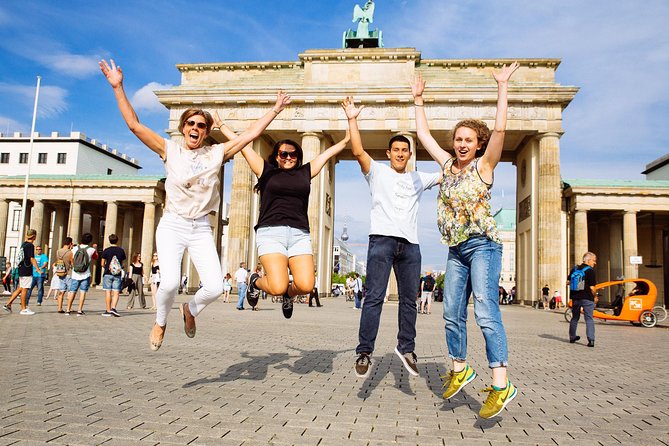
- Explore the iconic landmarks that witnessed Berlin’s tumultuous history, from the rise and fall of the German Reich to the division and reunification of the city.
- Discover the UNESCO World Heritage site of Museum Island, marveling at the neoclassical architecture and ancient artifacts that reveal Berlin’s cultural heritage.
- Gain insights into the Reichstag building’s significance, tracing its pivotal role during the World War II and Cold War eras, and its transformation after German reunification.
- Understand the historical significance of Checkpoint Charlie, a heavily fortified border crossing that became a symbol of the division between East and West Berlin.
- Reflect on the emotional and traumatic experiences of East Germans visiting the Palace of Tears, a poignant reminder of the impact of Berlin’s division on families and individuals.
Berlin’s Tumultuous Past
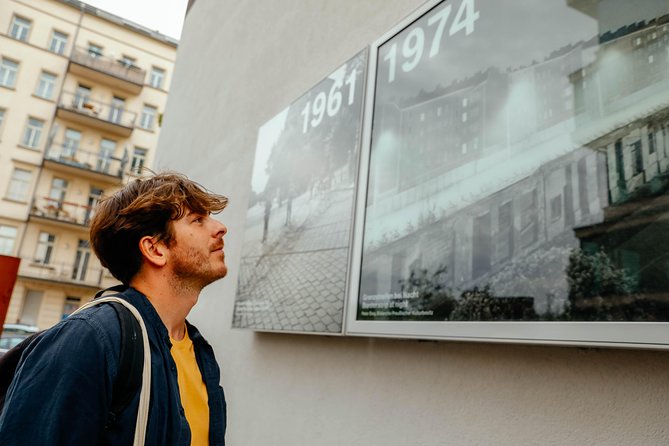
Berlin’s tumultuous past is inextricably linked to the rise and fall of the German Reich, which brought both immense tragedy and momentous change to the city.
From the ashes of World War II emerged a city divided, its residents grappling with the scars of occupation and the constraints of the Cold War. The once-vibrant cultural hub was split in two, with the Eastern bloc under Soviet control and the Western half aligning with democratic ideals.
This divisive period gave rise to iconic symbols like the Berlin Wall, which stood as a physical and ideological barrier until its dramatic fall in 1989.
Today, Berlin’s history is a testament to resilience, as the city has transformed into a dynamic, forward-looking metropolis.
Want to keep it personal? More private experiences we love in Berlin
Exploring Museum Island

Nestled within the heart of Berlin, Museum Island stands as a testament to the city’s rich cultural heritage, housing an impressive collection of world-renowned museums and architectural marvels.
Your private guide will lead you on a captivating exploration of this UNESCO World Heritage site, highlighting the stunning neoclassical buildings that form the island’s centerpiece.
You’ll marvel at the Pergamon Museum’s ancient Babylonian artifacts, the Altes Museum’s classical sculptures, and the Bode Museum’s breathtaking Byzantine art.
Along the way, your guide will share fascinating insights into the island’s turbulent history, from its origins as a royal palace to its role as a cultural refuge during the tumultuous years of World War II and the Cold War.
The Reichstag, Germany’s iconic parliamentary building, stands as a symbol of the nation’s tumultuous past and its resilient spirit. Its history is intertwined with the ebb and flow of Berlin’s political landscape, serving as a backdrop to pivotal moments that have shaped the city’s identity.
On this tour, visitors can explore the grandeur of the Reichstag’s architecture and learn about its significant role during the Second World War and the Cold War era. The building’s reconstruction after German reunification is a testament to the country’s commitment to democracy and its desire to reconcile with its complex history.
Stepping inside the Reichstag’s halls offers a glimpse into Germany’s ongoing journey of self-reflection and renewal.
Checkpoint Charlie’s History
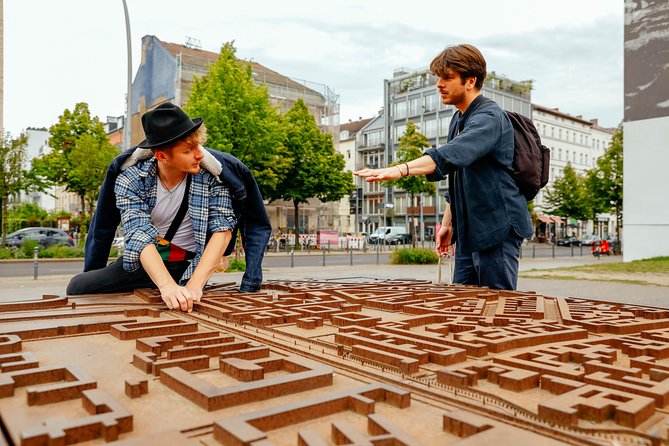
One of the most iconic symbols of the Cold War-era division of Berlin, Checkpoint Charlie stood as a heavily fortified border crossing between East and West Berlin from 1961 to 1990. This checkpoint, which was located at the intersection of Friedrichstrasse and Zimmerstrasse, became a flashpoint for tensions between the Soviet-backed East German government and the Western-aligned West German state. Soldiers from both sides maintained a constant presence at Checkpoint Charlie, underscoring the political and ideological divisions that defined the city during the decades of its existence.
The significance of Checkpoint Charlie was multifaceted:
-
It served as a highly visible reminder of Berlin’s separation and the broader conflict between East and West.
-
It was the site of numerous tense standoffs and attempted escapes by East German citizens seeking to flee to the West.
-
It became a popular tourist attraction, drawing visitors who sought to witness the division of the city firsthand.
Palace of Tears Reflections
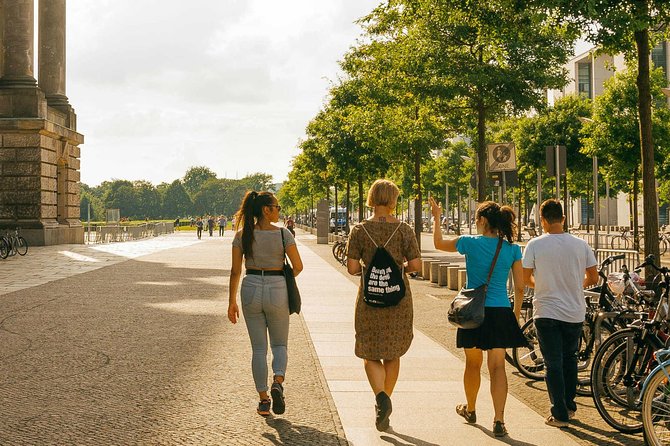
While Checkpoint Charlie embodied the political tensions of the Cold War, the Palace of Tears offered a more somber reflection on the human cost of Berlin’s division. This former border crossing station, located at Friedrichstrasse station, served as a place of emotional farewell for East German citizens permitted to visit West Berlin, many of whom were uncertain if they would ever see their loved ones again.
| Emotional Toll | Architectural Features | Visitor Experience |
|---|---|---|
| Tearful goodbyes | Austere design | Uncertainty of return |
| Separation of families | Lack of privacy | Surveillance by guards |
| Uncertainty of future | Limited amenities | Tightly controlled process |
| Trauma of division | Bare, functional spaces | Anxiety and stress |
The Palace of Tears stands as a poignant reminder of the profound human impact of Berlin’s division during the Cold War era.
If you're enjoying exploring Berlin on foot, you'll love these other walking tours we recommend
Hitler’s Bunker: A Chilling Visit
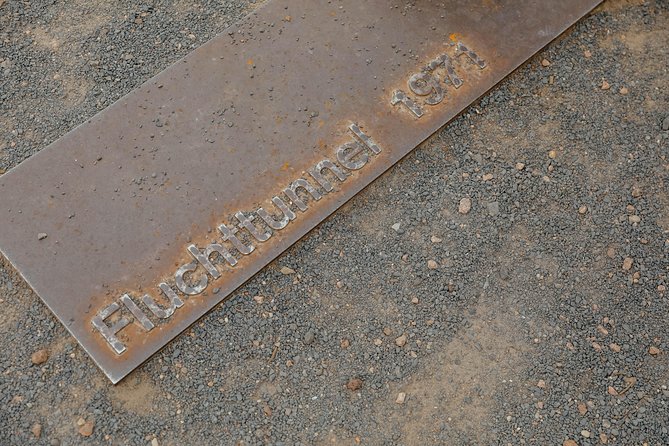
Nestled beneath the streets of Berlin, Hitler’s underground bunker stands as a chilling remnant of the city’s tumultuous past, offering visitors a sobering glimpse into the final days of the Third Reich.
As part of the WWII private walking tour, guests are guided through this eerie site, where they can:
- Explore the cramped, claustrophobic rooms where Hitler and his inner circle took refuge as the Allied forces closed in.
- Visualize the chaos and desperation that permeated the bunker in the final hours, as the Nazi regime crumbled around them.
- Reflect on the immense human suffering and devastation that occurred under Hitler’s twisted vision for Germany.
This haunting experience serves as a stark reminder of the horrors of the past and the importance of learning from history.
Memorial to the Murdered Jews
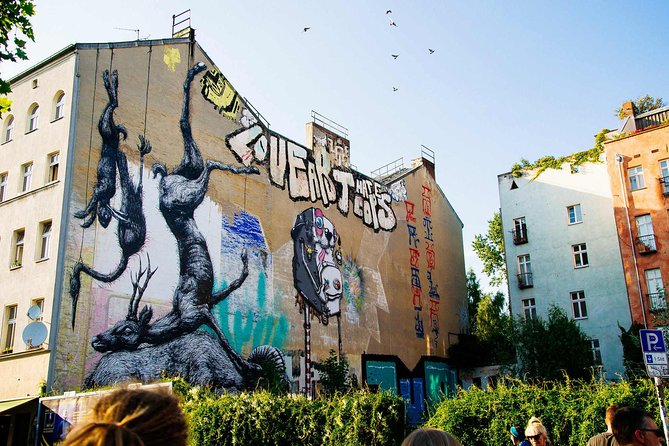
The Memorial to the Murdered Jews of Europe, also known as the Holocaust Memorial, stands as a powerful and sobering tribute to the millions of Jewish victims of the Nazi genocide.
Designed by architect Peter Eisenman, the memorial features 2,711 concrete slabs of varying heights, creating an eerie, disorienting maze. Visitors can walk through the undulating field, contemplating the immense scale of the tragedy.
The memorial’s stark, minimalist design evokes a sense of loss and emptiness, reflecting the profound devastation of the Holocaust. As one of Berlin’s most iconic landmarks, the Memorial to the Murdered Jews serves as a poignant reminder of the atrocities of the past and a call to never forget.
Customizing the Tour Experience
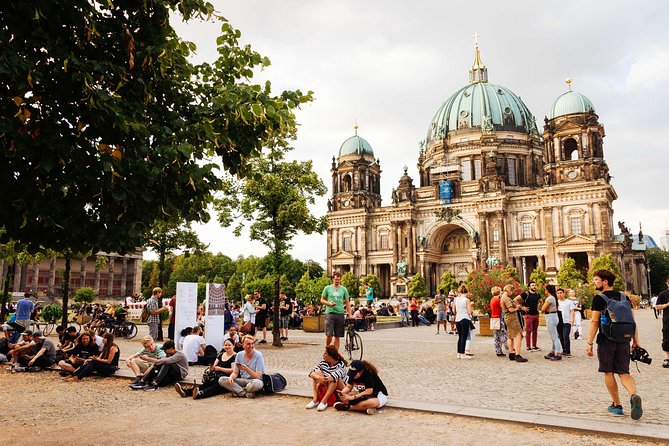
One of the key advantages of this private WWII walking tour is its customizable nature, allowing visitors to tailor the experience to their specific interests and preferences. The tour guide works closely with each group to understand their goals and adjust the itinerary accordingly.
This may include:
-
Prioritizing visits to particular landmarks or historic sites, such as the Palace of Tears, Hitler’s Bunker, or the Memorial to the Murdered Jews of Europe.
-
Focusing the tour on certain aspects of Berlin’s wartime history, whether it’s the rise of the Nazi regime, the horrors of the Holocaust, or the division and reunification of the city.
-
Pacing the tour to accommodate the group’s physical abilities and energy levels, ensuring a comfortable and enriching experience for all.
Frequently Asked Questions
What Is the Group Size for This Private Tour?
The group size for this private tour is the individual traveler or a small group. As a private tour, it offers personalized attention and the ability to customize the experience to the traveler’s interests and preferences.
Can I Take Photographs During the Tour?
Yes, participants can take photographs during the tour. The private nature of the tour allows for flexibility, and the guide encourages guests to capture the historic landmarks and sites they visit along the way.
Is There a Dress Code for the Tour?
There is no strict dress code for the tour, but visitors should wear comfortable, weather-appropriate clothing and walking shoes. The tour involves a significant amount of walking, so dressing for comfort is recommended to fully enjoy the experience.
Are There Any Food or Drink Options Along the Way?
There are no scheduled food or drink options along the tour route, though participants can stop for refreshments at their own discretion. Guides are happy to recommend nearby cafes or restaurants that fit within the tour’s timeline.
Do I Need to Bring Any Special Equipment or Gear?
The walking tour doesn’t require any special equipment or gear. Comfortable walking shoes and weather-appropriate clothing are recommended. Participants should bring water and snacks if needed during the 4-4.5 hour long tour.
Recap
The WWII Private Walking Tour with Locals offers an immersive exploration of Berlin’s tumultuous past.
Participants explore the rise and fall of the German Reich, the division of Berlin, and the construction of the infamous Berlin Wall.
This guided experience allows visitors to uncover the hidden stories and remnants of one of the most pivotal eras in German history, leaving them with a deeper understanding of the city’s resilience and transformation.
More Walking Tours in Berlin
More Tours in Berlin
More Tour Reviews in Berlin
Not for you? Here's more things to do in Berlin we have recnetly reviewed
- 5 Best Craft Beer Tours And Tastings In Berlin
- 3 Best Shopping Tours In Berlin
- 7 Best Christmas Experiences In Berlin
- 16 Best Dining Experiences In Berlin
- 2 Best 2 Day Tours In Berlin
- 4 Best Lunch Experiences In Berlin
- 2 Best Full-Day Tours In Berlin
- 15 Best Photography Experiences In Berlin
- 12 Best Dinner Tours In Berlin
- 25 Best Cruises And Boat Tours In Berlin
- 25 Best Food Tours In Berlin
- Third Reich Quest Experience in Berlin
